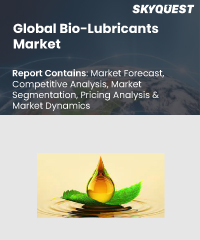
Report ID: SQMIG20I2242

Report ID:
SQMIG20I2242 |
Region:
Global |
Published Date: February, 2024
Pages:
157
|
Tables:
65 |
Figures:
75
Drivers
Growing Demand for Renewable and Biodegradable Lubricants
Advancements in Technology and Research
Restraints
Limited Availability and Compatibility
Lack of Standardization
Our industry expert will work with you to provide you with customized data in a short amount of time.
REQUEST FREE CUSTOMIZATIONWant to customize this report? This report can be personalized according to your needs. Our analysts and industry experts will work directly with you to understand your requirements and provide you with customized data in a short amount of time. We offer $1000 worth of FREE customization at the time of purchase.

Report ID: SQMIG20I2242